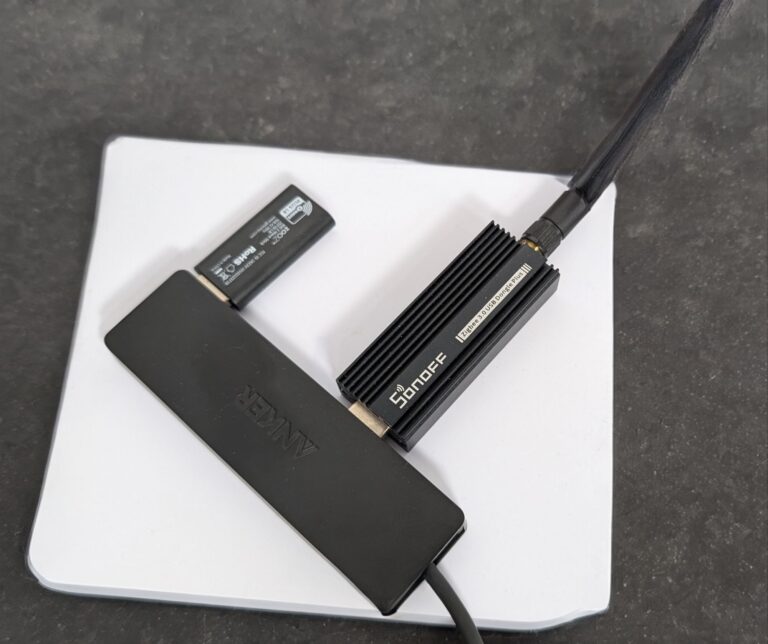When embarking on your home automation journey with Home Assistant, you’ll quickly encounter both Zigbee and Z-Wave devices. Many new smart home enthusiasts wonder which protocol is superior. The simple truth? Neither is inherently better – both have distinct advantages and trade-offs that might make one more suitable for your specific needs.
Why Consider These Protocols?
When I began exploring Home Assistant in 2022, my primary goals were reducing Wi-Fi congestion and minimizing dependence on cloud-based solutions. Here’s why:
- Multiple brands require separate apps and account logins
- I wanted flexibility to mix brands and device types
- Cross-brand compatibility can be challenging (though improving)
- Access to more affordable device options
- Preventing Wi-Fi network overcrowding
Getting Started with Coordinators
Both protocols require a hub or coordinator to function. If you’re building a Home Assistant setup, here are solid starting options along with a hub:
- For Zigbee: SONOFF Zigbee 3.0 Dongle
- For Z-Wave: Zooz ZWave 800 Series Long Range Dongle
- Hubs (As seen above): Anker USB 3.0 Hub
Zigbee: The Popular Choice for Beginners
Zigbee is often where most smart home enthusiasts begin their journey. This open-source protocol operates primarily on the 2.4GHz frequency band, offering several benefits:
- Wide device selection: From sensors to switches to lighting
- Lower power consumption: Ideal for battery-operated devices
- Brand recognition: Used by Phillips Hue and IKEA TRÅDFRI
- Generally affordable: More budget-friendly options available
An important consideration: since Zigbee shares the 2.4GHz frequency with Wi-Fi, interference can occur. Position your Zigbee coordinator away from your Wi-Fi router for optimal performance.
Because Zigbee is open-source, manufacturers can modify the codebase, occasionally leading to compatibility challenges between different brands.
Z-Wave: The Reliable Alternative
Z-Wave offers a different approach with a more controlled open-source ecosystem, limited to members of Z-wave Alliance:
- Operating frequency: Uses the 800-900MHz spectrum, reducing interference with Wi-Fi
- Reliable connections: Typically maintains more stable connections
- Standardized compatibility: More consistent cross-brand device interoperability
- Strong mesh network: Excellent signal propagation through walls and obstacles
The trade-off? Z-Wave generally has fewer device options and sometimes higher price points compared to Zigbee.
My Personal Experience
After experimenting with both protocols, I’ve found Zigbee excellent for testing and playing with various sensors, bulbs, and wireless switches. However, for critical home automation components, I prefer Z-Wave for its reliability and consistent connection stability.
The Zigbee mesh occasionally drops connections, while Z-Wave has proven more dependable in maintaining a robust network.
Protocol Comparison: Zigbee vs. Z-Wave
| Feature | Zigbee | Z-Wave |
|---|---|---|
| Frequency | 2.4GHz | 800-900MHz |
| Range | 30-50 feet | 100 meters (Point to Point) |
| Protocol Type | Open source | Open Source to Alliance Members |
| Power Consumption | Lower | Moderate |
| Device Availability | Extensive | Moderate |
| Price Range | Generally lower | Often higher |
| Interference with Wi-Fi | Potential issues (shares 2.4GHz) | Minimal (different frequency band) |
| Brand Examples | Phillips Hue, IKEA TRÅDFRI, Aqara | Zooz, Inovelli, Aeotec |
| Best For | Battery-powered sensors, lighting | Security devices, switches, critical automation |
| Mesh Strength | Good (can be affected by Wi-Fi) | Excellent (less interference) |
| Interoperability | Variable (manufacturer dependent) | Consistent (certification required) |
| Maximum Devices | 65,000+ (theoretical) | 232 per network (Including hub) |
| Signal Penetration | Fair | Better (lower frequency travels further) |
Both protocols have their place in a comprehensive smart home setup. Consider starting with a few devices from each to determine which better suits your specific needs and home environment.
UPDATE: The Folks at Zooz informed me that Z-Wave is open source to those that are a Part of the Z-Wave Alliance.

